The Caproni Ca.2 was an Italian heavy bomber of the World War I era.

The Delta was a 12-cylinder inverted-V aircraft engine built by Isotta Fraschini prior to and during World War II.
The Benz Bz.II was a six-cylinder, water-cooled, inline engine developed in Germany for use in aircraft in 1913. With a displacement of 10.15 l (619.4 cu in) it developed about 75–82 kW (100–110 hp). It had cast-iron cylinders with sheet metal cooling jackets welded to them. The two overhead valves per cylinder were operated via pushrods and rocker arms by a single camshaft embedded in the engine block on the right-hand side.

The Fiat A.12 was a six-cylinder liquid-cooled in-line engine with a bore of 160 mm and a stroke of 180 mm, giving a capacity of just under 22 liters, with variants producing between 245 and 300 horsepower at 1,700 rpm. The A.12 was a rather large aero engine at the time, but it was efficient and reliable. A total of 13,260 A.12s were produced between 1916 and 1919.

The Isotta Fraschini V.4 of 1916 was an Italian six-cylinder, water-cooled, in-line piston aero engine of World War I. Its construction was fairly typical of aircraft engines of the period with six cast-iron cylinders mounted in pairs with common heads. This engine was also produced by Alfa Romeo.

The Fiat A.14 was an Italian 12-cylinder, liquid-cooled, V aero engine of World War I. The A.14 held the distinction at the end of World War I of being the largest and most powerful aircraft engine in the world. First produced in 1917, 500 were built by the end of the war.

The Beardmore 120 hp was a British six-cylinder, water-cooled aero engine that first ran in 1914, it was built by William Beardmore and Company as a licensed-built version of the Austro-Daimler 6. The engine featured cast iron cylinders and mild steel concave pistons. Produced between August 1914 and December 1918, the design powered many World War I aircraft types.
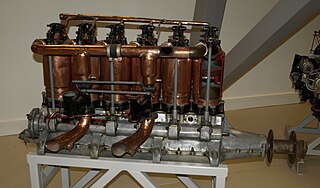
The Beardmore 160 hp is a British six-cylinder, water-cooled aero engine that first ran in 1916, it was built by Arrol-Johnston and Crossley Motors for William Beardmore and Company as a development of the Beardmore 120 hp, itself a licensed-built version of the Austro-Daimler 6.

The Fiat AS.6 was an unusual Italian 24-cylinder, liquid-cooled V configured aircraft racing engine designed and built in the late-1920s by Fiat especially for the Schneider Trophy air races, but development and running problems meant that it was never able to compete. Although the engine suffered from technical problems, it was later used to set a speed record for piston-powered seaplanes that still stands today.

For the aircraft of the same name, see Fiat AS.2 (aircraft)

The Fiat A.20 was an Italian aero-engine of the 1920s. It was a water-cooled V12 engine that was used by early versions of the Fiat CR.20 fighter and the Macchi M.41 seaplane.

The Green E.6 was a British six-cylinder, water-cooled aero engine that first ran in 1911, it was designed by Gustavus Green and built by the Green Engine Co and Mirlees, Bickerton & Day of Stockport between August 1914 and December 1918.

The Walter Bora was a Czechoslovakian nine-cylinder, air-cooled radial engine for powering light aircraft that was developed in the 1930s by Walter Aircraft Engines.
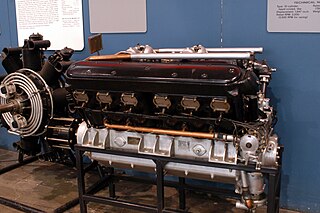
The Wright T-3 Tornado, also given the USAF designation Wright V-1950 was an American liquid-cooled aircraft piston engine, designed in the early 1920s.
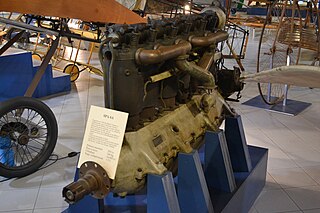
The S.P.A. 6A was an Italian aero engine of the World War I era. It was a water-cooled inline six-cylinder engine that produced 220 horsepower (164 kW).
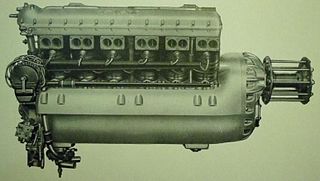
The Fiat A.24 was an Italian water-cooled aircraft engine from the 1920s, built in modest numbers. It produced 520 kW (700 hp).
The Franklin O-350 was an American air-cooled aircraft engine of the 1960s. The engine was of six-cylinder, horizontally-opposed layout and displaced 350 cu in (6 L). The power output was 235 hp (175 kW). The 6V-350 was a vertically mounted, fan cooled version for helicopters.
The Isotta Fraschini V.5 of 1916 was an Italian eight-cylinder, water-cooled, in-line piston aero engine of World War I. The "V" denoted "Volo" or "flight" rather than piston arrangement.

The Isotta Fraschini Gamma was an air cooled aircraft engine developed by the Italian engineering company Isotta Fraschini in the 1930s. It was an inverted V12 rated at over 500 hp (373 kW). Produced in small numbers for one-off aircraft, including the Ambrosini SAI.107 and Caproni Vizzola F.5 Gamma fighter trainer prototypes, it was developed into the more powerful and more numerous Delta.
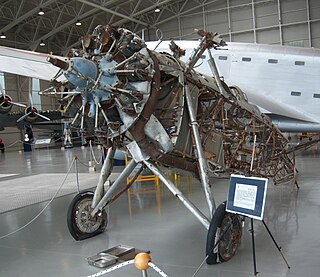
The Piaggio P.IX, or Piaggio Stella P.IX, was an Italian nine-cylinder radial aircraft engine produced by Rinaldo Piaggio S.p.A.. Based on the Gnome-Rhône 9K, the engine was rated at 600 hp (447 kW). Production was used to power a number of other aircraft developed in Italy. The main users were the Savoia-Marchetti SM.81 transport and the IMAM Ro.37bis, the main reconnaissance aircraft in the Regia Aeronautica during the Second Italo-Ethiopian War, Spanish Civil War and Second World War, but the engine was also used by other designs, including the prototype Savoia-Marchetti SM.79.
















